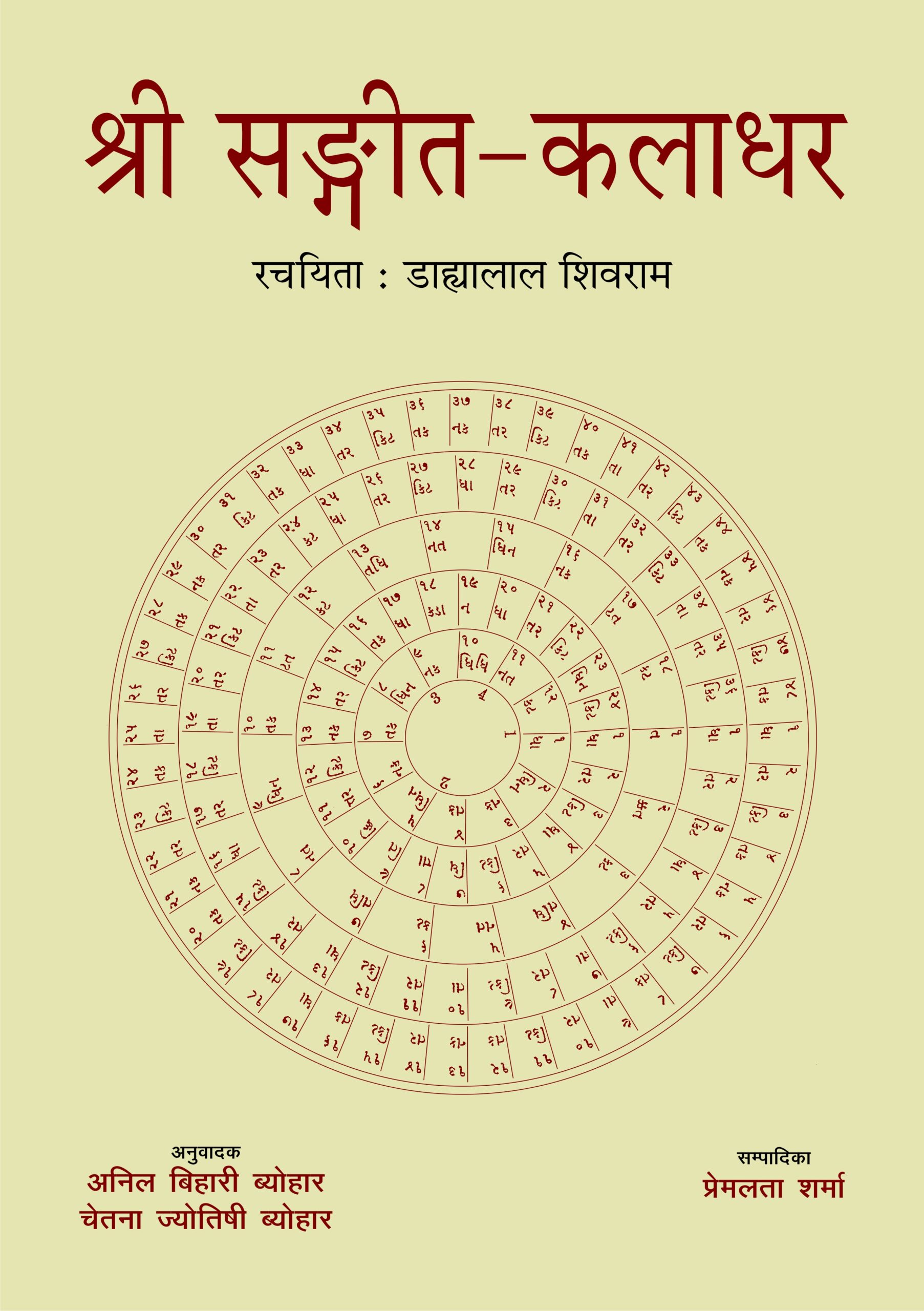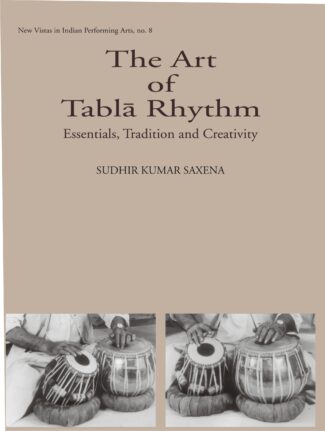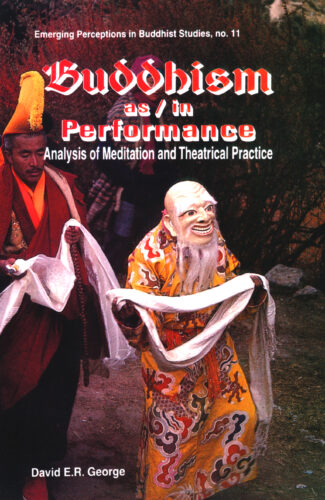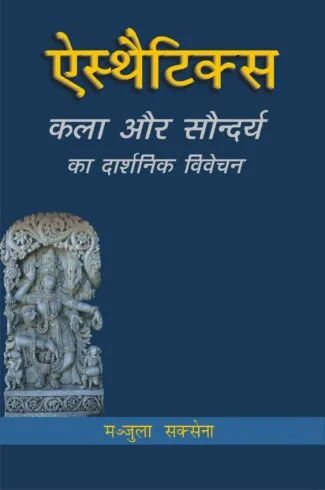

Shri Sangita Kaladha...
Shri Sangita Kaladhara; by Dahyalala Shivarama; Hindi translation by Bihari Byohara and Chetna Jyotisha Byohara
by: Dahyalal Shivram , Anil Bihari Byohar , Chetana Jyotish Byohar , Prem Lata SharmaThis book was written by an unusual royal court poet of Bhavanagar (Gujarat) between 1885 and 1900. It benefits those readers, music lovers and singers who are interested in having knowledge of our ancient musicology. This book tries to project the style and suras prevalent from ancient to the modern times, and is a very useful guide for the music critics.
₹1,250.00 Original price was: ₹1,250.00.₹1,125.00Current price is: ₹1,125.00.
ISBN: 9788124603635
Year Of Publication: 2006
Edition: 1st
Pages : xlii, 546
Language : Hindi
Binding : Hardcover
Publisher: D.K. Printworld Pvt. Ltd.
Size: 29 cm.
Weight: 2300
This book was written by an unusual royal court poet of Bhavanagar (Gujarat) between 1885 and 1900. It benefits those readers, music lovers and singers who are interested in having knowledge of our ancient musicology. This book tries to project the style and suras prevalent from ancient to the modern times, and is a very useful guide for the music critics.
- Sale!Art of Tabla-Rhythm by: Sudhir Kumar Saxena
₹550.00Original price was: ₹550.00.₹495.00Current price is: ₹495.00.This authoritative work deals comprehensively with Tabla rhythm, focusing on the performed art with an eye to its history and aesthetics. It is aimed at the Tabla student, the Tabla performer, as well as the inquiring listener of Hindustani music, for whom it encapsulates a Tabla practitioner’s knowledge in these matters acquired over a lifetime of learning and teaching. Beginning with the evolution of the Tabla, the book explains the technique of producing the basic bols. It further describes the way to do reyaz on the Tabla, to maintain the instrument through changing seasons, and to raise and moderate its pitch, besides other practical directions. The author explains the principal compositions that make up a standard Tabla recital, and how they may be played in solo and sangat contexts. The major gharanas of Tabla are discussed critically, and their notated compositions are provided in both Roman and Devanagari scripts. The CD accompanying the book carries samples of the tabla of these gharanas recorded under the author’s direction, as well as demonstrations of compositions used as illustrations in the book. Grounded in traditional learning in Tabla rhythm, the book is written with a rational, empirical mind, and in a lucid manner all along which makes it accessible to a wide range of musicians and listeners.
- Sale!Buddhism as/in Performance by: David E.R. George
₹500.00Original price was: ₹500.00.₹450.00Current price is: ₹450.00.Professor George has ventured into a comparatively unchartered area seeking, as he does, to explore the art and concept of performance in Buddhism more specially in the context of Buddhist meditation and theatre. Spelling out the epistemology of performance in all its different connotations and definitional nuances, his study opens out an astonishingly vast panorama of the Buddhist theatrical practices in Sri Lanka, China, Japan, Nepal, Tibet . . . and goes on to demonstrate how, within this panorama, three kinds of theatrical practice can be identified, each corresponding to one of the three paths open to a Buddhist: the karma path, the Bodhisattva option, and enlightenment, and each representative of one of the three main cultures of Buddhism the Hinayana, Mahayana, Vajrayana. Supported by extensive endnotes and bibliographic references, Dr. Georges book also carries a range of case studies of the art of performance in Buddhism, with definitive examples, among others, of the Sri Lankan Kandy dance and Karma drama, Tibetan Chams and Chod, and Japanese Noh. Buddhism as/in Performance is a commendable piece of painstaking research, presented in a jargonless, compellingly readable style. It is certainly a pre-eminent contribution to drama studies, particularly of Buddhist theatrical practices.
- Sale!Rasa in Aesthetics by: Priyadarshi Patnaik
₹990.00Original price was: ₹990.00.₹891.00Current price is: ₹891.00.The Indian tradition of criticism is over two millennia old. And its rasa theory has, from the beginning, essentially influenced authors, connoisseurs and art critics alike. First expounded sometime between the 1st century bc and the fourth century AD in the eminent aesthetician, Bharata’s Natya Shastra, rasa theory deals with the ‘emotive content’ of a work of art — how it is depicted, inferred and transmitted. Dr. Patnaik’s book is a unique effort that demonstrates, with diverse examples, the universality of this ancient theory and its applicability to modern Western classics. Elucidating afresh the concept of rasa and all its nine primary kinds largely on the basis of Natya Shastra of Bharata and the commentaries of the tenth-century aesthetician, Abhinavagupta, the book investigates the validity of rasa theory as an aesthetic, more specifically, a literary theory, and how its canons are applicable to modern Western literature as well as Chinese love lyrics and Japanese haiku poems. Dr. Patnaik’s transcultural exploration, thus, covers all major genres of literature — poetry, drama and fiction; and also major writers — Lawrence, Mayakovsky, Kafka, Camus, Conrad, Hemingway, Faulkner, Marquez, Eliot, Hesse, O’Neill, Ionesco, Beckett, Lorca, Neruda and several others. In emphasizing the universal validity of the rasa theory, the author considers certain modern problems relevant to text, meaning and readers’/audiences’ response as well. Very few are the examples of applied rasa theory even in Sanskrit and other Indian literatures, leave alone its application to Western creative writing. This book, with its bold framework and lucid style, should, therefore, fascinate the scholars of Indology, Indian aesthetics and, above all, comparative literary criticism.
- Sale!Hindustani Music by: Deepak S. Raja
₹1,300.00Original price was: ₹1,300.00.₹1,170.00Current price is: ₹1,170.00.Hindustani Music: A tradition in transition is a wide-ranging survey of the North Indian tradition of classical music during the post-independence period. Explicitly, this book addresses music lovers of above-average familiarity with Hindustani music, and their curiosity about its inner workings. It is, however, also a valuable reference for scholars and other writers on music. The book is based on the author’s long years of training as a musician, vast experience as an analyst of music, and an observer of the cultural environment. The book is divided into six parts. Part I articulates an Indian perspective on important societal, cultural, economic and technological drivers of Hindustani music. Part II discusses issues pertaining to presentation formats, and the structural and melodic aspects of Hindustani music. Part III deals with the notion of raga-ness, and the world of ragas. Part IV presents comprehensive backgrounders on the four major genres of vocal music Dhrupad, Khayal, Thumree, and Tappa. Part V features detailed fact-sheets on eight major melodic instruments of the Hindustani tradition Rudra Veena, Sitar, Surbahar, Sarod, Sarangi, Shehnai, Santoor, and the Indian classical (Hawaiian) guitar. Part VI presents a glossary of words in italics, a list of suggested readings, and an index. The book makes complex musicological concepts accessible to non-academic readers, and contributes significantly to widening the understanding of contemporary trends in Hindustani music. Written by an author of impeccable credentials as a musician, researcher, and author, this book is a very significant addition to the body of authoritative writing on 20th century Hindustani music.
- Sale!Aesthetics by: Manjula Saxena
₹600.00Original price was: ₹600.00.₹540.00Current price is: ₹540.00.After its attainment of Independence, India has witnessed the quickening of a new life in the field of art as well. Cultural exchanges between its various regions have shown a marked upswing, and reflection on cultural matters has also increased beyond expectations. Concurrently, in quite a few of our colleges and universities aesthetics has been included in the syllabi as an optional subject of study. Some books on this subject, mostly written in the traditional way, are surely available; but philosophical aesthetics, which is today regarded as a distinct intellectual achievement of the twentieth century, still remains largely neglected in the field of Indian scholarship. What is worse, a Hindi book on this form of aesthetics has never been attempted before the present work.
It is precisely this need which this book seeks to meet fairly. With an eye to facilitate understanding of the basic concepts and related problems of contemporary aesthetics, the author has taken pains to give appropriate references, as illustration, to Hindi, Urdu, and English poetry, and music. This should make the book useful to students of both philosophy and music.
Its language is simple Hindustani; and the manner of writing is free from needless ambiguities. Readers in general should therefore find it not only easy to follow, but interesting as well.








